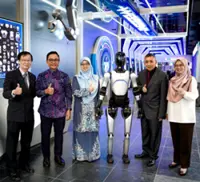Most users rely on AI bots to help with daily tasks, for companionship, role-playing, learning new skills or exploring AI capabilities, said E.J. Daigle, dean of robotics and manufacturing at Dunwoody College of Technology in Minneapolis. — Reuters
The first thing you should know about Laney is that she's empathetic and can help with just about anything.
A crochet pattern? She has it. Want to try out a new recipe? She can list the ingredients. Top trending news? She knows it.





